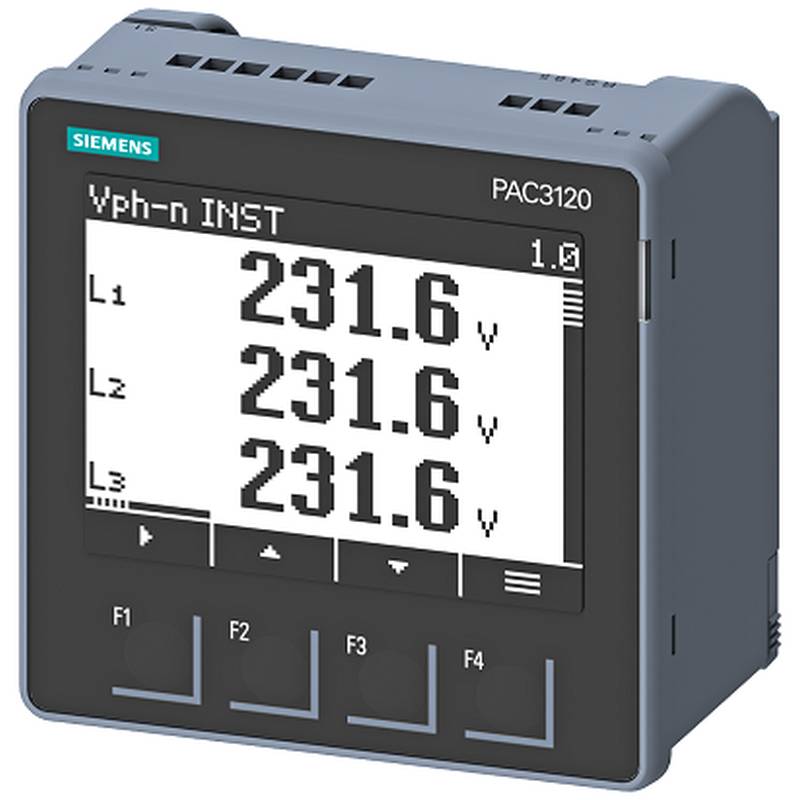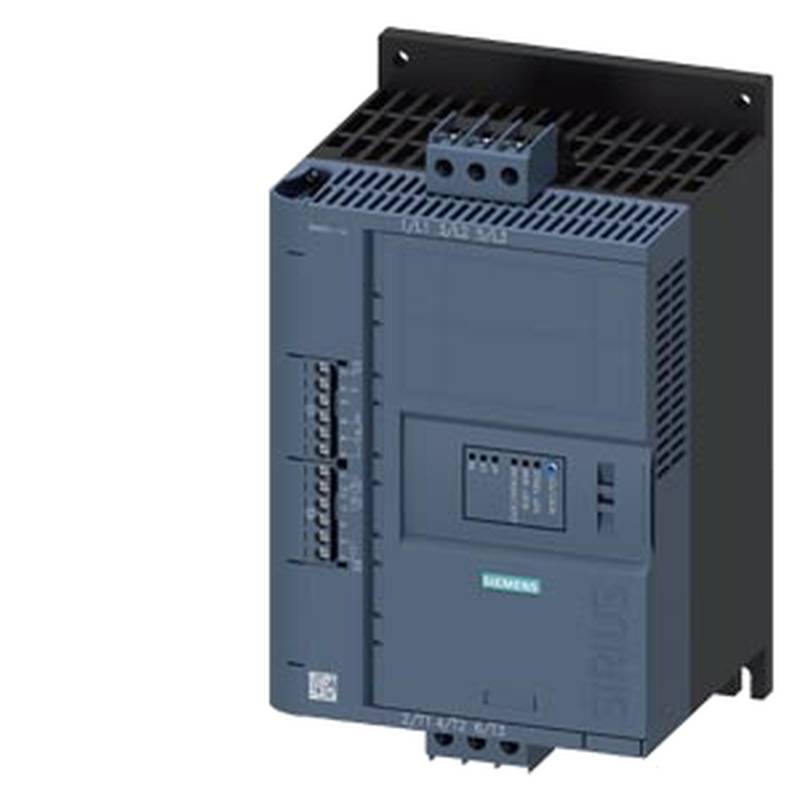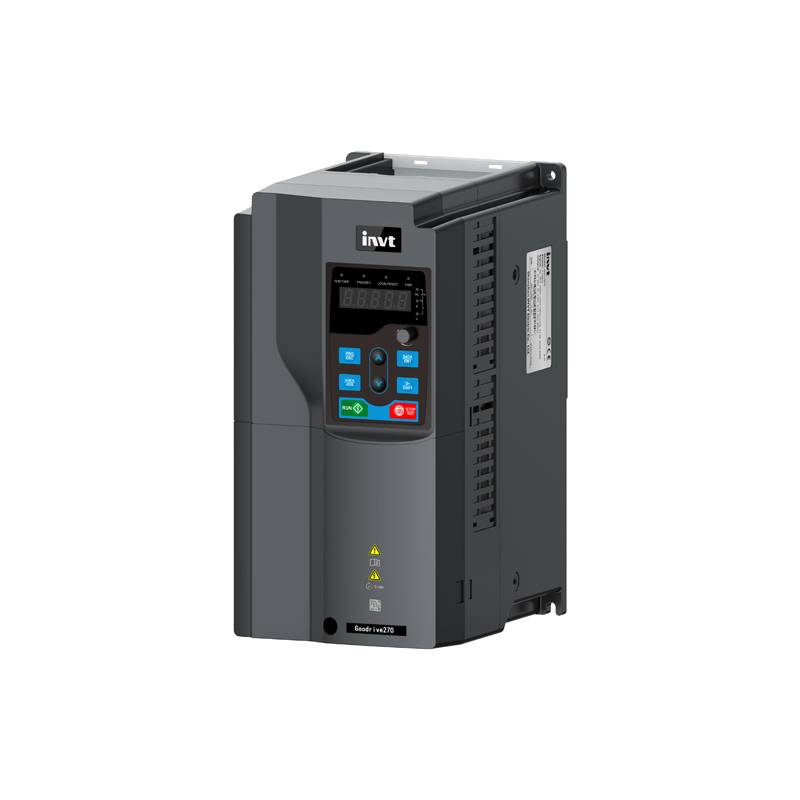
The Siemens 7KM1020-0BA01-1DA0 is a high-performance I/O status signal module designed for integration with PAC power meters, specifically within the SENTRON PAC power monitoring system. This module enhances the capabilities of power meters by providing essential status signal functionality, crucial for detailed electrical system monitoring and automation. Its core advantages lie in its precise measurement capabilities, robust communication protocols, and user-friendly interface, making it a valuable component for industrial and commercial energy management.
Product Specifications
| Parameter | Value |
| :------------------- | :----------------------------------------- |
| Maximum Voltage (Un) | 400/230V AC |
| Input Current (Ie) | X/5A AC |
| Frequency | 45-65 Hz |
| Power Supply Range | 85V – 276V AC |
| Communication | Modbus RTU |
| Mounting Type | Panel mount (96×96 mm) |
| Display | Graphical interface |
| Digital Inputs | 1 |
| Digital Outputs | 1 (switching or pulse output) |
| Input Voltage (DC) | Max. 30V |
| Output Current (DC) | Max. 130 mA (limited to 100 ms) |
| Protection Class | IP40 (front), IP20 (installed) |
| Operating Temperature| -10°C to +55°C |
| Storage Temperature | -25°C to +70°C |
| Humidity (non-cond.) | Max. 75% at 25°C |
| Installation Altitude| Max. 2000 m |
| Pollution Degree | 2 |
Core Features & Market Positioning
The Siemens 7KM1020-0BA01-1DA0 positions itself as a critical element for advanced power monitoring within the SENTRON PAC family. Its key differentiator is the seamless integration of I/O status signaling directly with power metering functions, offering a consolidated view of system health and performance. The Modbus RTU communication protocol ensures broad compatibility with existing SCADA and automation systems, simplifying data acquisition and control loops. Furthermore, the graphical display provides intuitive access to critical data, reducing the need for complex external interfaces and enhancing operational efficiency. This combination of features makes it a cost-effective and reliable solution for environments demanding precise electrical parameter monitoring and status feedback.
Key Application Scenarios
This Siemens I/O status signal module is ideally suited for a wide array of applications where detailed electrical system oversight is paramount. In industrial automation, it facilitates real-time monitoring of power quality and consumption, enabling predictive maintenance and energy optimization strategies. Within building management systems, it contributes to efficient energy allocation, load balancing, and fault detection, ensuring optimal operational performance and cost savings. For utility providers and grid operators, the 7KM1020-0BA01-1DA0 serves as a vital tool for monitoring distribution network status and performance, supporting grid stability and operational integrity. Its versatility extends to renewable energy installations, where it can monitor the performance and status of energy generation and distribution equipment.
Practical System Integration Guidance
Integrating the Siemens 7KM1020-0BA01-1DA0 into an existing SENTRON PAC system is designed for efficiency. The module features screw-type terminals for both digital inputs and outputs, facilitating straightforward and secure wiring. Its wide-range power supply (85-276V AC) accommodates various electrical installations without requiring specialized converters. For communication, the Modbus RTU protocol is implemented, typically requiring connection to a master device via an RS485 interface. Parameterization can be performed directly via the device's graphical interface or through configuration software, allowing for easy setup of measurement parameters, communication settings, and digital I/O functions. Ensure proper grounding and adherence to safety guidelines during installation to prevent damage to the device and ensure personnel safety.
Operation and Risk Mitigation
Operating the Siemens 7KM1020-0BA01-1DA0 involves straightforward interaction through its graphical LCD display and four control keys. Users can navigate menus to access measured values, configure parameters, and monitor the status of digital inputs and outputs. Risk mitigation is inherent in its design, including the IP40 front protection against dust and accidental contact, and CAT III measurement category for voltage measurements, safeguarding against transient overvoltages. Proper installation within closed rooms and control panels minimizes environmental risks. In terms of troubleshooting, attention should be paid to communication errors, incorrect wiring, or power supply issues. While specific fault codes are not explicitly detailed in general datasheets, understanding the device's operational parameters and diagnostic LEDs (if applicable through firmware) is key. Adherence to the specified operating temperature range and humidity levels is critical to prevent operational failures and ensure longevity.
Scalability & Long-Term Value
The Siemens 7KM1020-0BA01-1DA0 offers significant long-term value through its compatibility and integration capabilities within the broader Siemens SENTRON ecosystem. It can be expanded upon or integrated with other SENTRON PAC devices or expansion modules, such as RS485 communication modules (e.g., 7KM9300-0AM00-0AA0), to create more complex and comprehensive power monitoring solutions. Its Modbus RTU interface ensures it can connect with various industrial automation platforms and IIoT solutions, aligning with industry trends towards digital transformation and smart energy management. This interoperability guarantees that the module remains a relevant component in evolving industrial control architectures, protecting investments and enabling future upgrades.
Frequently Asked Questions
Q1: What are the primary functions of the Siemens 7KM1020-0BA01-1DA0 module?
The Siemens 7KM1020-0BA01-1DA0 module primarily functions as an I/O status signal module for Siemens PAC power meters. It measures key electrical variables such as voltage, current, active power, and reactive power, providing real-time data crucial for system monitoring and analysis. The module also incorporates digital inputs and outputs, allowing it to integrate status signals and control functions directly within the power monitoring framework.
This integration simplifies system design by consolidating power measurement and basic control signaling into a single device. It is designed to enhance the overall functionality of Siemens SENTRON PAC power monitoring systems, offering a comprehensive view of electrical system health. Its ability to communicate via Modbus RTU further extends its utility by enabling seamless data exchange with higher-level automation and SCADA systems.
The module's graphical display and intuitive interface provide operators with direct access to measurements and operational status. This immediate feedback loop is invaluable for operational efficiency and rapid response to system changes or anomalies, making it a versatile tool for various industrial applications.
Q2: How does the Modbus RTU communication of the 7KM1020-0BA01-1DA0 benefit system integration?
The Modbus RTU protocol is a widely adopted serial communication standard in industrial automation. By featuring Modbus RTU, the Siemens 7KM1020-0BA01-1DA0 ensures broad compatibility with a vast array of existing automation hardware and software systems. This significantly simplifies its integration into diverse control architectures without requiring proprietary interfaces or complex middleware solutions.
This standard protocol allows the power meter data and status signals to be easily collected and processed by PLCs, SCADA systems, and other master devices. It facilitates efficient data acquisition for energy management, performance analysis, and remote monitoring applications. The reliability and simplicity of Modbus RTU contribute to a robust and cost-effective communication infrastructure.
Leveraging Modbus RTU allows for scalable system expansion. New devices or systems that support this protocol can be readily added to the network, and the 7KM1020-0BA01-1DA0 can communicate seamlessly with them. This ensures the longevity and adaptability of the installed system in the face of evolving technological demands.
Q3: What are the typical voltage and current ratings supported by this Siemens power meter module?
The Siemens 7KM1020-0BA01-1DA0 supports a maximum rated voltage (Un max) of 400/230V AC, making it suitable for most low-voltage industrial and commercial power distribution systems. Its rated input current (Ie) is specified as X/5A AC, indicating compatibility with standard current transformers where the primary current is scaled to 5A at the secondary side for measurement.
This rating range allows the module to accurately monitor power consumption and system parameters in various three-phase and single-phase configurations commonly found in power panels and distribution boards. The frequency range of 45-65 Hz further ensures compatibility with standard AC power grids worldwide.
The ability to measure voltage up to 400V and current via standard 5A secondary transformers provides a versatile solution for a broad spectrum of electrical monitoring needs. This makes it an adaptable choice for applications ranging from general facility power monitoring to specific equipment load analysis.
Q4: Can the 7KM1020-0BA01-1DA0 be used in panel mounting applications, and what are its dimensions?
Yes, the Siemens 7KM1020-0BA01-1DA0 is specifically designed for panel mounting applications. It features a standard 96x96 mm form factor, which is a common size for control panel instruments, ensuring easy integration into existing electrical enclosures and control cabinets. This standardized dimension simplifies installation and replacement processes.
The panel-mount design allows for secure and flush installation on the front of a control panel or switchboard. This not only provides a clean and professional appearance but also ensures that the display and control buttons are easily accessible to operators. The device typically uses screw terminals for connections, further simplifying the wiring process during installation.
Its compact dimensions and panel-mount capability make it an ideal choice for retrofitting older systems or for new panel designs where space efficiency is a consideration. The IP40 rating on the front panel offers protection against dust and accidental contact, enhancing safety in an operational environment.
Q5: What is the power supply requirement for the Siemens 7KM1020-0BA01-1DA0 module?
The Siemens 7KM1020-0BA01-1DA0 operates with a wide-range auxiliary power supply of 85V to 276V AC. This broad input voltage range offers significant flexibility, allowing the module to be deployed across various electrical supply systems without the need for specialized voltage converters or transformers.
This wide-range power supply ensures reliable operation even in environments where voltage fluctuations are common. It simplifies installation logistics, as it can be connected to a wide variety of AC power sources available within industrial or commercial facilities. The device also supports DC power supply within this range.
The flexibility in power supply simplifies inventory management for distributors and integrators, as a single model can serve multiple voltage configurations. This adaptability reduces potential compatibility issues and speeds up project deployment for power monitoring solutions.
Q6: Does this module have digital inputs and outputs for basic control functions?
Yes, the Siemens 7KM1020-0BA01-1DA0 is equipped with one digital input and one digital output. The digital input can be used to monitor external status signals, such as the status of circuit breakers, door contacts, or alarm conditions, and integrate this information into the power monitoring system.
The digital output can function as a switching or pulse output. This allows the module to signal critical events, like an alarm threshold being reached, or to be used in basic control sequences in conjunction with the power meter's measurements. The output voltage is DC, with a maximum permissible rating of 30V.
These integrated I/O capabilities allow the module to perform basic control and monitoring tasks directly, reducing the need for separate I/O devices in simpler applications. The digital output is rated for a maximum of 130 mA for short durations (100 ms), suitable for signaling or actuating small loads.
Q7: What level of accuracy can be expected from the measurements provided by this device?
The Siemens 7KM1020-0BA01-1DA0 provides accurate measurements for electrical variables. For measured current, the total measurement inaccuracy is specified at +/- 0.5%. For voltage, the formula for relative total measurement inaccuracy is also provided, indicating a similar level of precision.
The device utilizes TRMS (True Root Mean Square) measurement for both voltage and current, ensuring accuracy even with non-sinusoidal waveforms commonly found in industrial environments with variable frequency drives and other non-linear loads. The detection of the complete voltage curve further enhances measurement integrity.
While specific accuracy classes for power measurements are detailed in technical documentation, the overall precision of +/- 0.5% for current and voltage suggests a high level of performance suitable for critical energy management and system monitoring applications. Adherence to standards like IEC 62053-21 for active and reactive power measurements further underscores its reliability.
Q8: Is this module compatible with other Siemens SENTRON PAC devices or expansion modules?
Yes, the Siemens 7KM1020-0BA01-1DA0 is part of the SENTRON PAC system and is designed for seamless integration with other Siemens SENTRON PAC power monitoring devices and expansion modules. For example, RS485 communication expansion modules, like the 7KM9300-0AM00-0AA0, can be used to enhance communication capabilities within a larger SENTRON PAC network.
This compatibility ensures that users can build scalable power monitoring solutions by adding functionalities or increasing the number of measurement points as needed. The system's modular design allows for future upgrades and adaptations to changing operational requirements.
By adhering to Siemens' integrated system approach, users benefit from guaranteed interoperability and optimized performance. This compatibility not only simplifies initial system setup but also ensures reliable operation and simplifies maintenance when combined with other certified Siemens components.
Q9: What are the environmental operating conditions for the Siemens 7KM1020-0BA01-1DA0?
The Siemens 7KM1020-0BA01-1DA0 is designed to operate reliably within a specified range of environmental conditions. During operation, the ambient temperature should be between -10°C and +55°C. For storage, the temperature range is wider, from -25°C to +70°C, providing flexibility during transit and warehousing.
The module can withstand a maximum relative air humidity of 75% at 25°C, provided there is no condensation. It is suitable for installation at altitudes up to 2000 meters above sea level, making it applicable in a variety of geographical locations. The pollution degree is rated at 2, which is typical for industrial environments.
These environmental specifications ensure the device's robustness and longevity in typical industrial and commercial settings. Adhering to these operating conditions is crucial for maintaining measurement accuracy and preventing premature failure of the unit.
Q10: Where can I find detailed technical documentation, such as datasheets and manuals, for the 7KM1020-0BA01-1DA0?
Detailed technical documentation, including comprehensive datasheets and user manuals, for the Siemens 7KM1020-0BA01-1DA0 can be found on the Siemens Industry Online Support portal. Specific links are often provided by distributors and on product pages, directing users to resources like "Service&Support (Manuals, Certificates, Characteristics, FAQs...)".
Product pages on Siemens' official website and authorized distributor sites typically offer access to PDF versions of datasheets, installation guides, and operation manuals. These documents provide in-depth technical specifications, connection diagrams, parameterization instructions, and troubleshooting guidance.
For example, comprehensive data sheets detail measurement procedures, supply voltage requirements, display specifications, communication protocols, input/output configurations, and mechanical dimensions. Manuals also cover installation, commissioning, operation, and maintenance procedures.
























